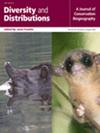Population dynamics are usually assessed through linear trend analysis, quantifying their general direction. However, linear trends may hide substantial variations in population dynamics that could reconcile apparent discrepancies when quantifying the extent of the biodiversity crisis. We seek to determine whether the use of non-linear methods and the quantification of temporal variability can offer a more complete representation of changes in global population dynamics than commonly-used linear approaches.
We analysed 6437 population time series from 1257 vertebrate species from the Living Planet Database over the period 1950–2020. We modelled populations through the use of second-order polynomials and classified trajectories according to their direction and acceleration. We modelled and classified these same populations using a more classical linear trend analysis. We quantified temporal variability using the mean squared error of the fitted polynomials. We then used generalised linear mixed models to test potential sources of heterogeneity in non-linear trajectories and temporal variability.
In all, 44.8% of the analysed population time series were non-linear. Across all populations, 30% were declining, 30% were increasing, and 40% were with no linear trend. Among the population showing no linear trend, half were concave or convex. Non-linearity was expressed differently between taxonomic groups, with mammals showing higher prevalence of non-linearity. Marine and freshwater populations were more variable than terrestrial populations, and fish were more variable than other vertebrates. Differences between geographical regions were detected in both non-linearity and temporal variability, but no straightforward pattern emerged. There were no differences in both components between IUCN categories.
Non-linearity and temporal variability reveal usually overlooked dramatic declines or recovery signals in global population dynamics. Thus, moving beyond linearity can improve our understanding of complex population dynamics and better inform conservation decisions. In particular, populations usually classified as ‘stable’ can hide informative changes in non-linear and variability patterns that need to be considered in global biodiversity assessments.



